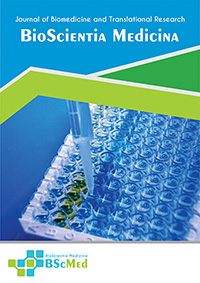Main Article Content
Abstract
Background: Obesity hypoventilation syndrome (OHS) is a serious respiratory condition characterized by obesity, sleep-disordered breathing, and daytime hypercapnia. Both continuous positive airway pressure (CPAP) and non-invasive ventilation (NIV) are commonly used to treat OHS, but their comparative effectiveness remains unclear. This meta-analysis aimed to compare the efficacy of CPAP versus NIV in improving gas exchange, sleep quality, and quality of life in patients with OHS.
Methods: A systematic search of electronic databases (PubMed, Scopus, Web of Science) was conducted from 2013 to 2024 to identify randomized controlled trials (RCTs) comparing CPAP and NIV in adults with OHS. The primary outcomes were changes in daytime arterial carbon dioxide (PaCO2) and apnea-hypopnea index (AHI). Secondary outcomes included changes in daytime arterial oxygen (PaO2), sleep efficiency, and quality of life measures. Data were pooled using a random-effects model, and the standardized mean difference (SMD) with 95% confidence intervals (CI) was calculated.
Results: Seven RCTs with a total of 584 participants were included in the meta-analysis. Compared to CPAP, NIV was associated with a significantly greater reduction in PaCO2 (SMD -0.45; 95% CI -0.88 to -0.02; p=0.04) and AHI (SMD -0.61; 95% CI -1.17 to -0.05; p=0.03). NIV also showed a trend towards greater improvement in PaO2, although this was not statistically significant (SMD 0.32; 95% CI -0.06 to 0.70; p=0.10). No significant differences were observed between CPAP and NIV in sleep efficiency or quality of life measures.
Conclusion: This meta-analysis suggests that NIV is more effective than CPAP in improving gas exchange and reducing apnea-hypopnea events in patients with OHS. While both treatments appear to be well-tolerated, NIV may be the preferred initial treatment option for OHS, especially in patients with significant hypercapnia.
Keywords
Article Details
As our aim is to disseminate original research article, hence the publishing right is a necessary one. The publishing right is needed in order to reach the agreement between the author and publisher. As the journal is fully open access, the authors will sign an exclusive license agreement.
The authors have the right to:
- Share their article in the same ways permitted to third parties under the relevant user license.
- Retain copyright, patent, trademark and other intellectual property rights including research data.
- Proper attribution and credit for the published work.
For the open access article, the publisher is granted to the following right.
- The non-exclusive right to publish the article and grant right to others.
- For the published article, the publisher applied for the Creative Commons Attribution-NonCommercial-ShareAlike 4.0 International License.





